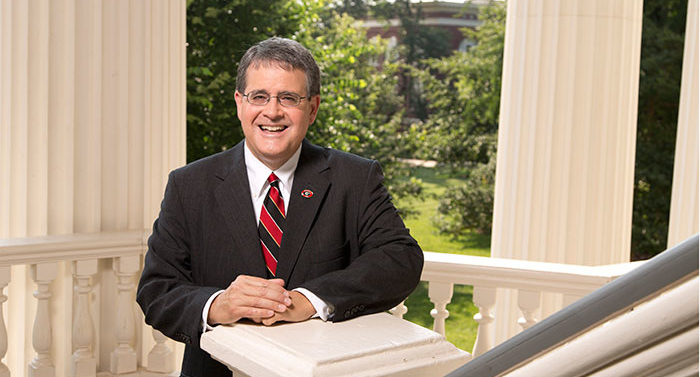University of Georgia President Jere Morehead called two faculty groups’ resolution detailing what they called “glaring failures of governance” related to plans to reopen campus “unsubstantiated and inappropriate” in a letter released Tuesday.
Morehead was responding to a resolution passed by the faculty senates of the Franklin College of Arts and Sciences and Mary Frances Early College of Education last week. All concerns should go through the University Council, Morehead wrote. And he said the University System of Georgia, which runs all 26 of Georgia’s public colleges and universities, is responsible for pandemic planning, and detailed what is being done at UGA.
Chancellor Steve Wrigley also responded to the resolution:
Dear Dr. Rice and Dr. Mojock,
Thank you for sharing the resolution on behalf of the Franklin College of Arts and Sciences Faculty Senate and the Mary Frances Early College of Education Faculty Senate.
The Board of Regents of the University System of Georgia (USG) remains committed to the essential importance of health and safety for students, faculty and staff. USG has followed COVID-19 guidance from the Georgia Department of Public Health (DPH) and Centers for Disease Control and Prevention (CDC) and continues to do so.
With that in mind, preparations for fall semester including at the University of Georgia resulted from a lengthy, detailed planning process that began in April. USG presidents representing every sector in the system have brought critical campus perspective to both the system’s decisions regarding its COVID-19 response and the development of guidelines for returning workforce to campuses and returning to on-campus instruction. In turn, presidents involved hundreds of campus constituents to develop institution-specific, comprehensive plans over the summer detailing steps for three contingencies: On-campus instruction with social distancing (the current plan), a temporary move to online instruction after starting the semester face-to-face and fully online instruction.
These plans prioritize the health and safety for students, faculty and staff, while recognizing the value and importance to students of the on-campus educational experience as one that is simply richer and more well-rounded. No matter how, the delivery of instruction will certainly be different than last fall as accommodations are made for the medically fragile and as institutions adapt to space and other conditions unique to each campus. We, like you, are determined to address the many challenges.
This includes adapting course and campus schedules to allow for social distancing. In some cases, hybrid courses will mean students will spend some time in a classroom mixed with taking some of the course online. Some courses will be online-only and others in-person as social distancing and other public health guidelines allow. The look and feel of campus will be different, with no large lecture classes and altered event schedules.
Everyone is required to wear masks if they are inside a campus building where 6-feet of social distancing cannot be maintained. The system is providing all campuses with PPE and considerable amounts of cleaning and disinfectant supplies, including 1.8 million masks. More than 50,000 test kits have been purchased to supplement testing supplies already purchased by institutions. Decisions have also been made on every campus about testing programs, with each campus naming a liaison to their local public health office to ensure coordination of contact tracing and isolation/quarantine plans for those testing positive. We are in constant contact with DPH; we talk regularly with them and they are a valuable partner in our efforts. Consultation and training with the Georgia National Guard have helped strengthen campus cleaning schedules, and all campuses are stressing best public health practices of washing hands for 20 seconds, using hand sanitizer, disinfecting frequently touched surfaces, covering coughs and sneezes, staying home when ill, social distancing and wearing a mask.
Finally, we have asked institutions to increase their communication with campus communities. Just one example is the Georgia Film Academy’s “Stay Safe, Stay Well” video promoting safe behaviors. It’s embedded in students’ online accounts and since May has been viewed more than 80,000 times.
We have pursued this range of strategies to reduce risk, recognizing we cannot eliminate risk. The measures outlined above are those recommended by experts to protect oneself and others. I understand we are all anxious but UGA has taken measures to reduce risk while serving its students, faculty and staff. There are many risks associated with online-only education, including the education risk to students and the substantial fiscal risk to our institutions. While protecting health and safety are essential, we must also make decisions considering these other risks as well.
Please know we take our responsibility very seriously. As CDC and DPH guidance changes, we will revisit our guidance to USG institutions.
Thank you again for sharing your concerns with me.
Sincerely,
Steve W. Wrigley
Chancellor, University System of Georgia
Like what you just read? Support Flagpole by making a donation today. Every dollar you give helps fund our ongoing mission to provide Athens with quality, independent journalism.










